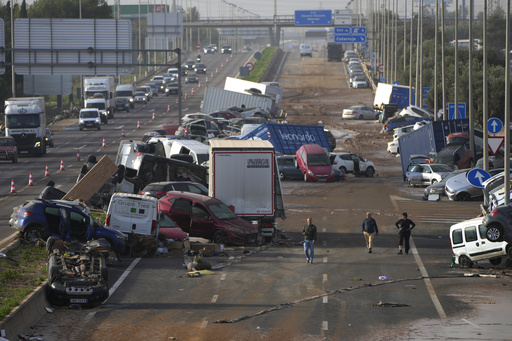
BARRIO DE LA TORRE, Spain — Shortly after raging waters burst into her home, Mari Carmen Pérez received a text from regional authorities in Spain alerting her to potential flash floods.
By the time Pérez’s phone buzzed, water had already flooded her kitchen, living room, and bathroom, prompting her family to escape to the upper floor.
“They didn’t have any idea of what was going on,” Pérez, a 56-year-old cleaner, shared Wednesday over the phone from Barrio de la Torre in Valencia. “Everything is ruined. The people here, we have never seen anything like this.”
She counted herself as one of the fortunate ones. Tragically, over 150 lives were lost, many individuals trapped in vehicles or on the ground floor of their homes when riverbanks overflowed, inundating numerous communities on the southern outskirts of Valencia city.
The staggering death toll has raised serious concerns about how such devastation could occur in a European Union country recognized for its high standards of public safety.
As rescue teams continued to search for victims among the rubble and mud, frustration mounted among the grieving families and friends of those who perished, alongside countless others whose lives were severely impacted by the flooding. Streets teemed with residents attempting to gather essential supplies while navigating their ruined vehicles and impassable roads.
Local government officials in Valencia have faced criticism for their delayed response in disseminating flood warnings to mobile devices. Alerts were not sent out until 8 p.m. on Tuesday, by which time the flooding had already begun in several areas, well after the national meteorological agency had issued a red alert for heavy rainfall.
Valencia regional President Carlos Mazón, representing the conservative Popular Party, defended his government’s handling of the crisis, asserting that “all our supervisors adhered to the standard protocol” coordinated by the national government.
Spain’s Interior Ministry stated that regional administrations bear the responsibility for alerting the public about potential flooding and other natural disasters.
Adding to the discontent, Mazón faced backlash for his assertion at 1 p.m. on Tuesday that the storm would “lose strength” by 6 p.m.; instead, conditions worsened.
The scale and ferocity of the extreme weather were shocking and exceedingly difficult for any administration to foresee and prepare for. However, Valencia, situated on Spain’s Mediterranean coastline, has experienced autumn storms leading to flooding in the past, albeit typically less severe than this monstrous storm.
Spain’s national weather agency informed both officials and the public as far back as Sunday, two days prior to the disaster, about a 70% likelihood of heavy rain.
On Tuesday morning, at 7:30 a.m., the agency issued its red alert—the highest weather warning level—as the impending disaster became apparent.
Andreu Salom, the mayor of the nearby village of L’Alcudia, told a national broadcaster that his town lost at least two residents: a daughter and her elderly mother who lived together. Search efforts were ongoing for a missing truck driver.
Salom voiced his concerns about the lack of warnings regarding the calamity, which struck as the Magro River overflowed.
“I was on my way to check the river level because I had no information,” Salom mentioned. “I went with the local police, but we had to turn back because a tsunami of water, mud, reeds, and dirt was already invading the town.”
